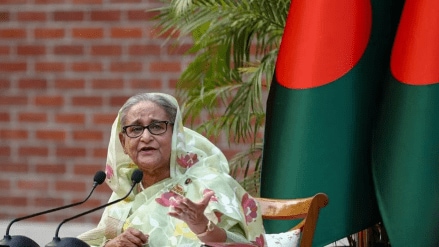In 2021, the United Nations General Assembly adopted a resolution A/76/L.6/Rev.1 to elevate Bangladesh, along with Nepal and the Lao People’s Democratic Republic, from the least developed country (LDC) category. This significant step marks a pivotal moment for Bangladesh, which is poised to graduate to developing nation status in 2026. While this transition presents numerous opportunities, ongoing protests and political instability pose serious challenges that could hinder the country’s growth and trade relations, particularly with India.
Bangladesh’s Graduation from LDC
FinancialExpress.com had reported in 2021 that Bangladesh has made substantial progress since being included in the LDC category in 1975, when its poverty rate was nearly 83%. By 2019-20, the poverty rate had fallen to 20.5%, and the country met the United Nations’ criteria for transitioning to a developing nation. These criteria include a per capita income of at least USD 1,230, an Economic Vulnerability Index (EVI) below 32 points, and a satisfactory Human Assets Index. With these achievements, Bangladesh is set to officially attain developing nation status in 2026, a milestone that reflects its socio-economic advancements.
Economic Benefits and Trade Relations
Graduating to a developing nation status offers Bangladesh numerous economic benefits, including increased Foreign Direct Investment (FDI) and higher credit ratings. The country’s rising per capita income, which stood at USD 1,827 in 2019, enhances its attractiveness to multinational banks and investors. This growth potential also bodes well for Bangladesh’s trade relations with India, as the country can negotiate more favourable Free Trade Agreements (FTAs) and attract Indian businesses seeking new market opportunities.
Challenges from Ongoing Protests
However, the path to becoming a developing nation is fraught with challenges, primarily due to ongoing protests and political instability. These issues can have far-reaching consequences on Bangladesh’s economic trajectory and its relations with key trading partners like India.
Investor Confidence: The ongoing unrest undermines investor confidence, making Bangladesh a less attractive destination for FDI. Political instability often leads to uncertainty in economic policies, which can deter both local and international investors. A decline in FDI could slow down economic growth and hinder the country’s ability to achieve its development goals.
Disruption of Economic Activities: Protests and strikes can disrupt business operations, leading to losses for local companies and affecting overall economic productivity. Such disruptions could delay infrastructure projects and other development initiatives essential for sustaining high growth rates.
Impact on Trade with India: Political instability can adversely affect trade relations with India, Bangladesh’s largest trading partner. Border tensions and disruptions in supply chains could lead to delays in the movement of goods, affecting bilateral trade. Additionally, any potential trade agreements or collaborations could be stalled due to an unstable political environment, limiting Bangladesh’s ability to capitalize on its new status as a developing nation.
Conclusion
While Bangladesh’s impending graduation to developing nation status presents significant opportunities for economic growth and stronger trade relations with India, the ongoing protests and political instability pose serious risks. The unrest threatens to undermine investor confidence, disrupt economic activities, and strain bilateral trade relations. As Bangladesh navigates this critical juncture, maintaining political stability and addressing the underlying causes of the protests will be crucial in ensuring a smooth transition to a developing nation. Without these measures, the country risks jeopardizing its hard-earned progress and potential for future growth.
